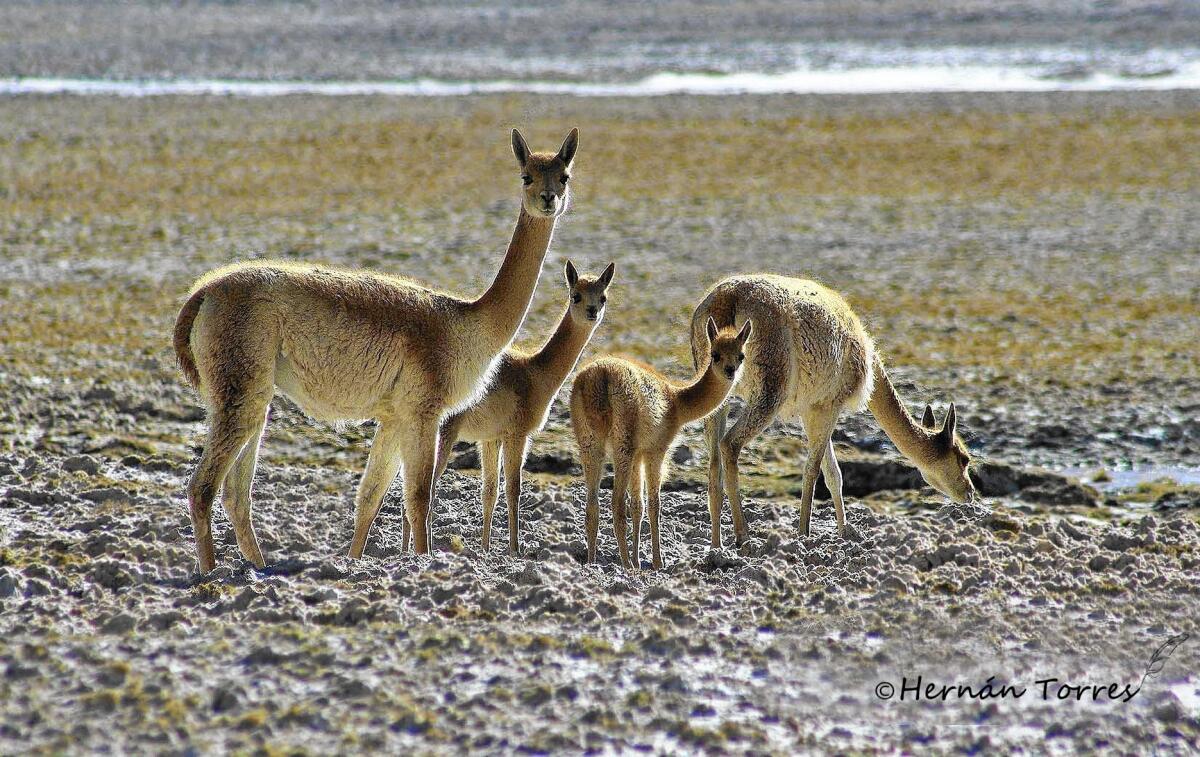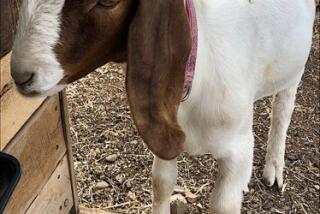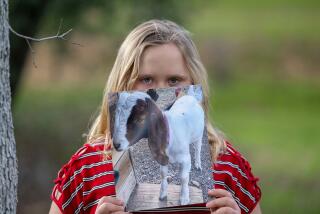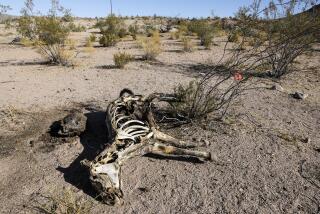High demand for luxury wool prompts poachers to slaughter vicunas

Vicunas, the wild Andean relatives of camels, are being hunted mercilessly by poachers as the price of the animals’ luxuriantly soft hair, coveted by European and Asian apparel makers for coats, scarves and shawls, goes through the roof.
Police last month found 150 carcasses of skinned vicunas in the high altitude Peruvian village of Espite, providing grisly evidence of the menace to the South American mountain mammals, which also are related to llamas and alpacas.
The killing of the animals was a blow to the 70 indigenous families in Espite who derive their livelihoods from sustainable management of the creatures. By corralling and shearing vicunas as they migrate from watering spots to higher elevation sleeping grounds, native Andean families in Peru, Chile, Bolivia and Argentina have kept a centuries-old tradition alive.
But with the black market price of vicuna wool approaching $1,000 per kilo, an amount requiring the wool of about five adult animals, those traditions of husbandry are under fire. Gangs that Chilean government officials say are based in Bolivia are going for a quicker buck by roaming over lightly policed mountainous areas in Peru and Chile to shoot and then skin the animals.
After the skins are hustled across the border to Bolivia, wool is collected and shipped to apparel manufacturers in China and Europe, where the fiber is processed and then woven into high priced clothing. Much of the fiber is shipped out of Arica, Chile’s northern-most port, where a bi-national pact shields Bolivian goods from inspection, officials say.
Vicuna garments have long been favored by royalty, Hollywood stars and the super-rich. Full-length coats recently have been priced as high as $20,000, with men’s suits made by Italian designers going for more than $40,000.
Why so expensive? The only natural fiber softer than vicuna is silk, said Carlos Nassar, chief of the Arica district of CONAF, Chile’s forestry protection agency.
The profits have incited poachers to kill, according to Hernan Torres, formerly a Chilean environment ministry official and now a private researcher and consultant. In January, two Chilean police officers were shot to death not far from this northern port city, apparently by poachers whom they had detained at a road block.
“The situation has gotten much worse. Law enforcement officials in the Andes simply have been overwhelmed by the mafias who have the vicuna killed and skinned, and who then sell the fiber to China and Europe,” Torres said.
The risk to the animals and to law enforcement officials has prompted the global Convention on International Trade in Endangered Species of Wild Fauna and Flora to put vicunas on the top of their list of endangered animals. The wildlife protection agency Traffic also considers them endangered.
The slayings of the two Chilean officers in January were not isolated violence. Two men were arrested this month in the northern Argentine city of Catamarca after shooting at police who were about to stop their truck loaded with 75 pounds of vicuna fleeces. Chilean police near Arica were also involved in a gunfight with poachers in May 2014 after seizing 70 vicuna hides.
The killings of animals and police officers have made legitimate cultivation of vicunas by indigenous communities all the more difficult and dangerous, said Gloria Castro, a university professor in Arica who also heads a 15-family cooperative of Aymara indigenous herders who manage vicunas in the village of Putre, 75 miles east of Arica.
Castro was reluctant to comment on who the poachers might be, saying, “We don’t know because they government hasn’t caught them.”
But Castro, an Aymara whose family has herded vicuna for three generations disclosed that members of her cooperative probably know who gang members are and where they come from but are afraid to say because of their isolation, infrequent police presence and threats from the mafias.
“We do know the poachers use infrared binoculars to hunt at night with high-powered rifles. But who they are, no [members] will say because they are threatened and told if you say anything, something will happen to you,” said Castro who is an electronics professor at University of Tarapaca. She declined to have her photo taken for this article because of the risk of being identified by poachers.
Despite the increasingly high prices for vicuna wool, Castro said, legitimate shearing of the animals is becoming less profitable. That’s because of the high cost of hiring, transporting and feeding the 50 to 60 people needed to help herd the animals into funnel-shaped corrals where they can be shorn.
“Many of the families who used to cultivate vicunas left the mountains and went down to the cities,” Castro said. The cooperative received government assistance to help it get formed in 2006. “Now we are on our own” and the cooperative has lost members, she said.
The animals typically are shorn only once every two years because their hair grows slowly. Each shearing yields about 200 grams of fiber, meaning it takes five adult vicunas to produce 1 kilo of wool, said Nassar of CONAF in Arica. A family or cooperative’s typical herd is about 200 vicunas yielding about 20 kilos of wool a year, meaning that at current prices, a family or group can gross $20,000.
The governments of Chile and Peru maintain official counts of the animals, which are considered property of the state, with indigenous communities given the exclusive right to husband them. According to the 2013 census, Chile’s herd totaled only 13,000 and Bolivia’s 100,000.
Indy Rodriguez, a biologist at the Legends Zoological Park in Lima, Peru, said the most recent census of Peruvian vicunas, in 2012, counted 209,000 animals.
Efforts to boost the size of herds in Chile have failed because the sparse vegetation at the mountain elevations of 14,000 feet or more, where the animals graze, doesn’t support it, Castro said. Unlike llamas and alpacas, the animals don’t take to domestication, she said.
Torres said stricter controls must be enforced in global trade of vicuna fiber if the tradition is to survive.
“The problem is the demand for vicuna products is so high and people are willing to pay a lot of money for them,” he said. “Also, Bolivian laws are weak and don’t punish people for illegal buying. That’s why it’s become a center for the illicit trade.”
Kraul is a special correspondent.
More to Read
Start your day right
Sign up for Essential California for news, features and recommendations from the L.A. Times and beyond in your inbox six days a week.
You may occasionally receive promotional content from the Los Angeles Times.






